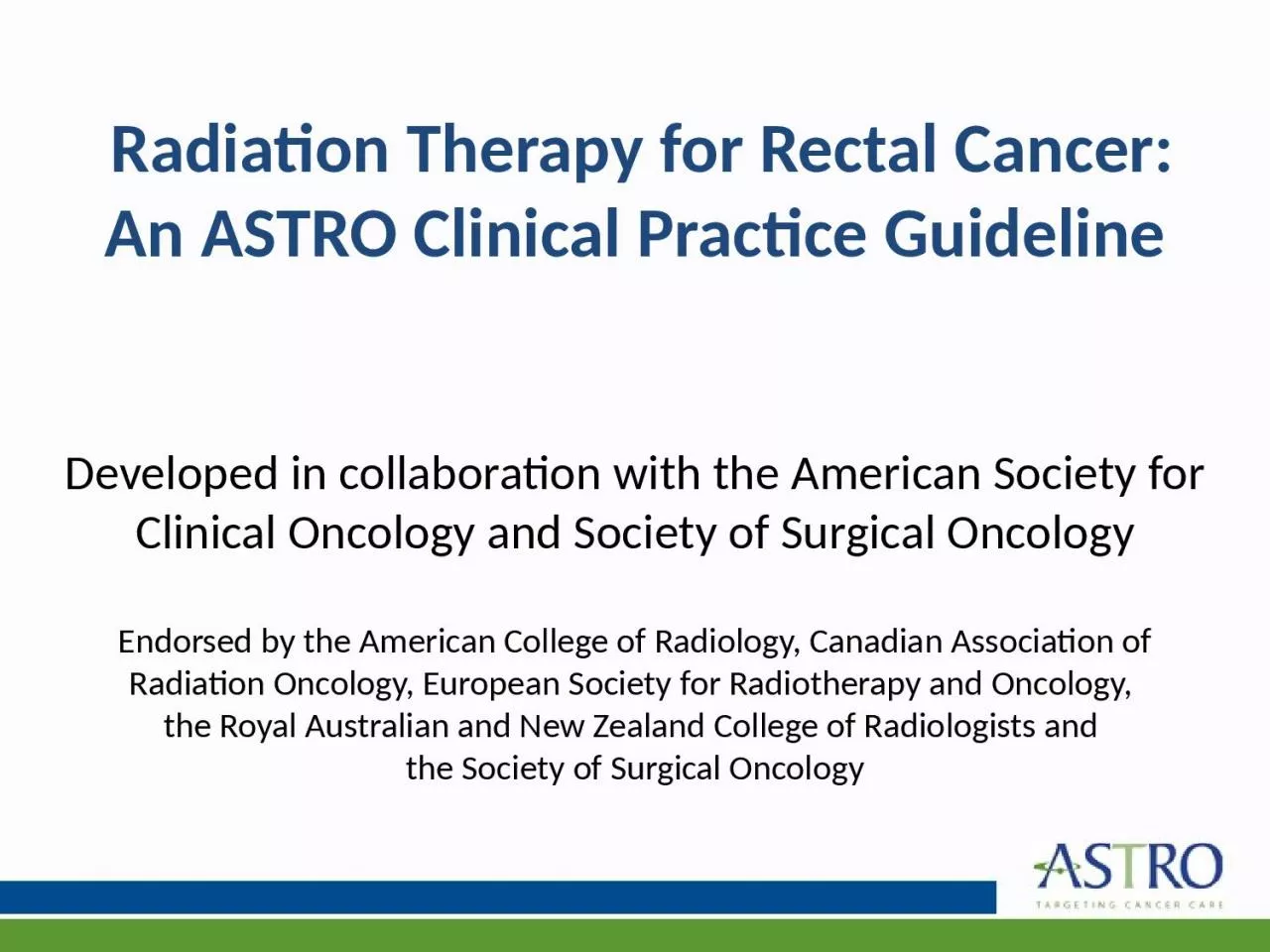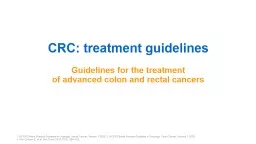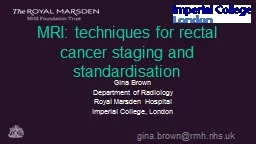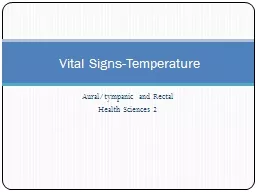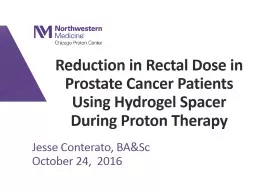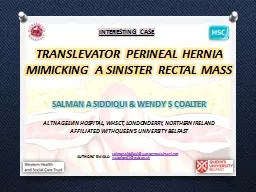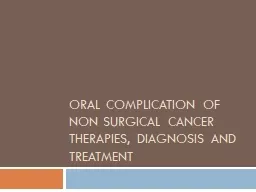PPT-Radiation Therapy for Rectal Cancer: An ASTRO Clinical Practice Guideline
Author : sophie | Published Date : 2024-01-13
Developed in collaboration with the American Society for Clinical Oncology and Society of Surgical Oncology Endorsed by the American College of Radiology Canadian
Presentation Embed Code
Download Presentation
Download Presentation The PPT/PDF document "Radiation Therapy for Rectal Cancer: An ..." is the property of its rightful owner. Permission is granted to download and print the materials on this website for personal, non-commercial use only, and to display it on your personal computer provided you do not modify the materials and that you retain all copyright notices contained in the materials. By downloading content from our website, you accept the terms of this agreement.
Radiation Therapy for Rectal Cancer: An ASTRO Clinical Practice Guideline: Transcript
Download Rules Of Document
"Radiation Therapy for Rectal Cancer: An ASTRO Clinical Practice Guideline"The content belongs to its owner. You may download and print it for personal use, without modification, and keep all copyright notices. By downloading, you agree to these terms.
Related Documents

